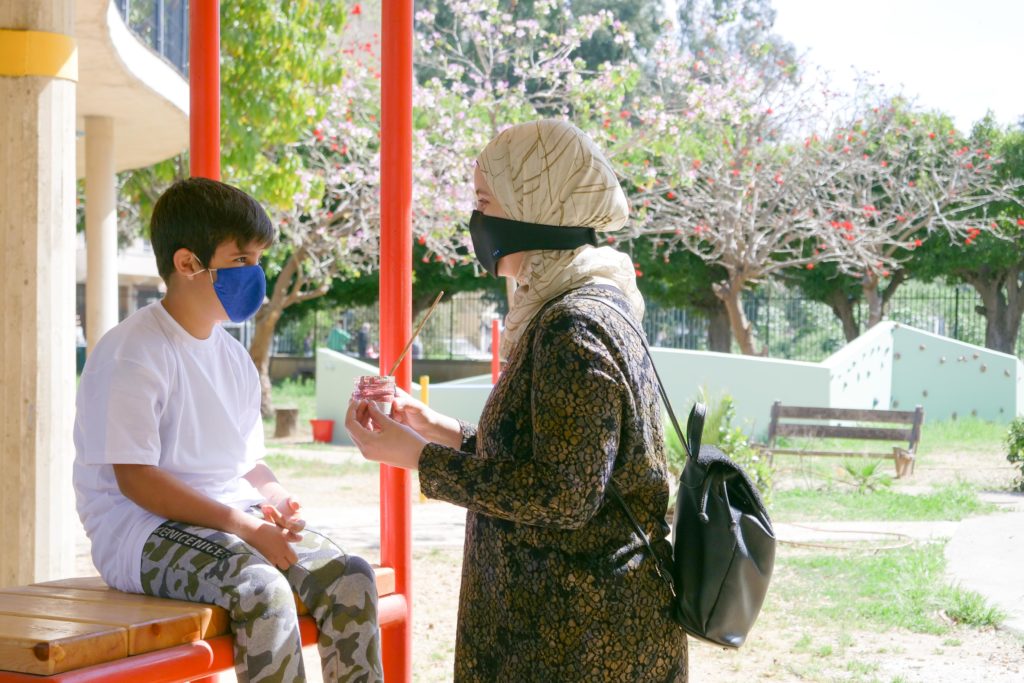
Key points
Ideas originate in a variety of ways and from different actors.
Children must be at the centre of developing ideas for interventions.
Ideas are more likely to enrol broader support if they are consistent with existing research, frameworks, and practices at different scales.
Co-designed built interventions are not linear processes, they can originate in a variety of ways and from different actors. Sometimes the first step is made by children, their caregivers, and their community coming together to express a need to schools, local authorities, or NGOs. Sometimes, external actors approach local communities and organisations with an initial proposal. In this case, it is important to engage children and their communities at an early stage. During this engagement, transparency about what is offered and what resources have been secured is important, as well as ensuring that early engagements provide valuable experiences to participants. For example, activities with children to identify their needs and challenges should have value in themselves, incorporating learning, play and fun, without generating expectations.
It may not be possible to immediately engage children and their caregivers, as a number of safeguarding and other preparatory processes need to be in place before this can happen. Moreover, as this handbook will discuss, engaging children without having secured the resources and partnerships required to deliver the intervention may create expectations that cannot be fulfilled. Frustrated expectations generated by external actors are unfortunately a common occurrence, particularly in vulnerable communities and with groups who have already faced major uncertainties. It is easy to unwittingly set expectations that cannot be fulfilled, leaving a legacy of mistrust towards external governmental and non-governmental actors, which can undermine other interventions.

Before approaching children and their caregivers, it is good practice to thoroughly research what information on the local context is already available. For example, in the case of children affected by displacement, it is highly likely that government and non-governmental agencies have already conducted a needs assessment, site specific assessment, or similar activity. Some examples may include UN-Habitat’s Urban Profiling work, e.g. the collaboration with UNICEF on neighbourhood profiles for Lebanon; government urban observatories and platforms, datasets and reports on specific sectors (e.g. Lebanon crisis response plan, UNHCR data portal). Institutions providing services to these groups, such as schools, can also provide insights on preliminary ideas (see a more detailed discussion in step 4.2 – Existing knowledge and key local stakeholders).
Reaching out to other actors avoids duplication and concentrating interventions in the same area. It can help communities and areas of need to learn from each other and plan complementary interventions. A review of existing and upcoming projects in the area can help define the idea and adapt it to what works in a specific context.
The following are examples of where intervention ideas can originate:
- Child participation structures in child friendly cities, such as Child Local Councils, Children’s Advisory Boards, etc.
- Community members. For example, a teacher who recognises a need at their school, a resident who has an idea to solve a problem in their neighbourhood. They might approach organisations or people who can help them develop a proposal.
- A multilateral agency (e.g. WHO, UNICEF, World Bank) initiates a call for proposals which can target NGOs or local government.
- An NGO develops an idea for an intervention following a needs assessment based on donors’ priority areas.
- A bilateral agreement provides funding to a government hosting refugees which is allocated to municipalities who decide on interventions.
- A practitioner develops an idea based on his/her experience of working with communities on a daily basis.
- National and local priorities underpinned by global frameworks (e.g. Sustainable Development Goals) encourage a range of actors to develop an idea.
- Personal interest, for example a philanthropist interested in promoting educational projects for children.
Whether the initial idea comes from ‘top-down’ (e.g. an international organisation) or ‘bottom-up’ programming (e.g. a group of children), as long as an adequate participatory process is set up early, all the different ways of initiating a co-designed intervention are legitimate and depend on the context.
Ideas generated from broader cross-sectoral partnerships tend to result in more effective interventions, for example policy attempts to make cities child-friendly. In such cases, the co-designed built intervention becomes a component of a more comprehensive programme. Where municipal plans exist, it is important to develop ideas within these frameworks to ensure the sustainability of the intervention as well its compatibility with others. Framing an idea within existing municipal, national and global frameworks can help to enrol other actors in the process and build comprehensive partnerships.
These frameworks can:
enrol actors by leveraging on their mandate and commitments;
provide legitimacy;
provide a shared language to talk about the intervention and its impact;
offer ways to mobilise resources as donor priorities align with these policy frameworks;
support knowledge management and sharing of best practices and lessons learnt.
Below are some examples of documents that can help frame ideas to garner support.
The City’s Master Plan or other city-level development plans; Mayor’s agenda; public space strategies; neighbourhood plans; Child Local Plans in UNICEF recognized CFCs.
National Development Plan or national plans to implement Sustainable Development Goals.
Sustainable Development Goals; Convention for the Rights of the Child; the Global Compact on Refugees; Global Compact for Migration; the 2030 Climate
and Energy Framework, Convention on the Rights of Persons with Disabilities.
In order to formulate a good idea, bring partners together, and obtain the necessary funding, the context and its stakeholders must be understood. However, it is often difficult to conduct a full context analysis prior to obtaining funding, and sometimes it may be ethically problematic to engage a community in extensive field research before funding is secured. How much context analysis is needed to generate an idea and formulate a project proposal, and how much can be undertaken once the project has been set in motion, are important decisions. A number of factors are involved, including the relationship between organisations and the community, the openness of funders, and the capacities of partners to undertake research before funding is obtained. This means that several aspects detailed in step 4 – Researching local context and needs – are often undertaken in earlier steps.



